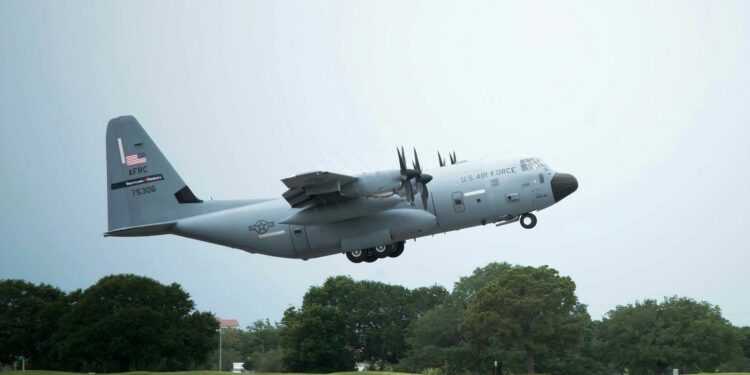Following the devastation and loss of life brought about by Hurricanes Helene and Milton, two major storms that made landfall in West Florida just two weeks apart, we thought it would be interesting to see how the United States Air Force (USAF) prepares for a hurricane. Being prepared before a natural disaster can be the difference between life and death. While the USAF is primarily a fighting force, its skills and assets are vital in helping people in harm’s way.
While constantly training to defend the homeland against threats from hostile countries, the men and women of the USAF continuously train to provide aid to people affected by hurricanes, wildfires, tornadoes, and even erupting volcanoes. Of all the natural disasters that occur on Earth, hurricanes pose the greatest threat to life, with winds gusting up to 120 mph and storm surges and inland flooding that can put people’s homes underwater.
The 53rd Weather Reconnaissance Squadron
Most commonly known as “Hurricane Hunters,” the 53rd Weather Reconnaissance Squadron is a 403rd Wing component located at Keesler Air Force Base in Biloxi, Mississippi. Equipped with ten Lockheed WC-130J aircraft, the Hurricane Hunters deliberately fly into tropical storms to collect data.
The Hurricane Hunters can trace their history back to 1943 when a surprise storm in the Gulf of Mexico struck Houston, Texas. Before the hurricane landed, British Royal Air Force (RAF) pilots being trained as instrument instructors in Bryan, Texas, heard the Americas were evacuating their AT-6 Texan trainer aircraft. While teasing their instructors about the airworthiness of the planes, former Eastern Airlines pilot and base commander Lt. Col. Joseph B. Duckworth bet his students that he could fly into the storm and return unharmed.
On July 27, 1943, Duckworth roped in 2nd Lt Ralph M. O’Hair as his navigator and flew one of the base’s trainers into the eye of the storm. After returning unharmed, the base’s only Meteorological Officer, 1st Lt William H. Jones-Burdick, asked if Duckworth would fly him into the storm so that he could take temperature readings and make observations. Now, knowing that it was feasible to fly into hurricanes unharmed.
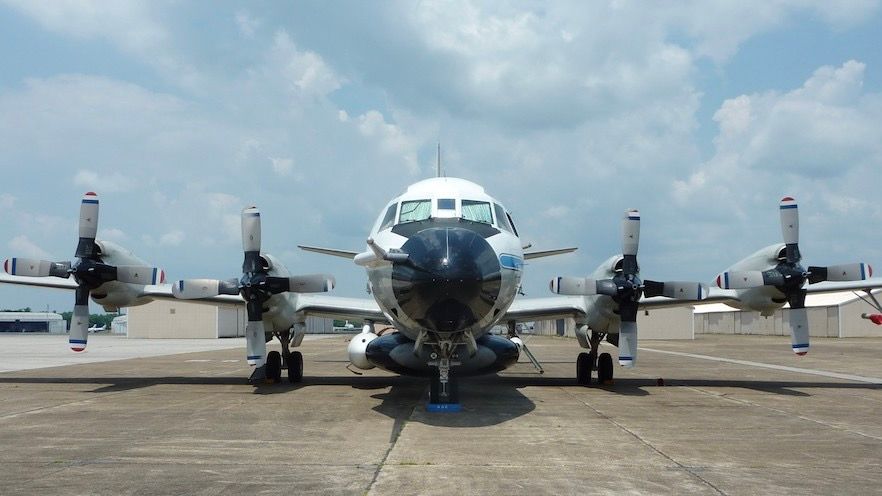 Related Hurricane Hunters: Flying Into The Eye Of The Storm
Related Hurricane Hunters: Flying Into The Eye Of The Storm
It may seem like risky business, but this work can be crucial!
The 53rd Weather Reconnaissance Squadron was formed on August 7, 1945, and based at Presque Isle Army Air Field in Maine. Flying twin-engine North American B-25 Mitchell bombers, its goal was to monitor weather patterns on the shipping lanes between North America and Europe. In 1946, the squadron abandoned its B-25s for the larger four-engine Boeing B-29 Superfortress. While the aircraft was not an ideal platform for weather reminiscence, it was during this period the name “Hurricane Hunters” was first used to describe its missions.
After brief periods of being based in Florida, Bermuda, and even RAF Burtonwood in Chesire, England, the 53rd Weather Reconnaissance Squadron moved to Ramey Air Force Base, Puerto Rico. When Ramey closed in 1973, the Squadron moved to its present home at Keesler Air Force Base in Biloxi, Mississippi.
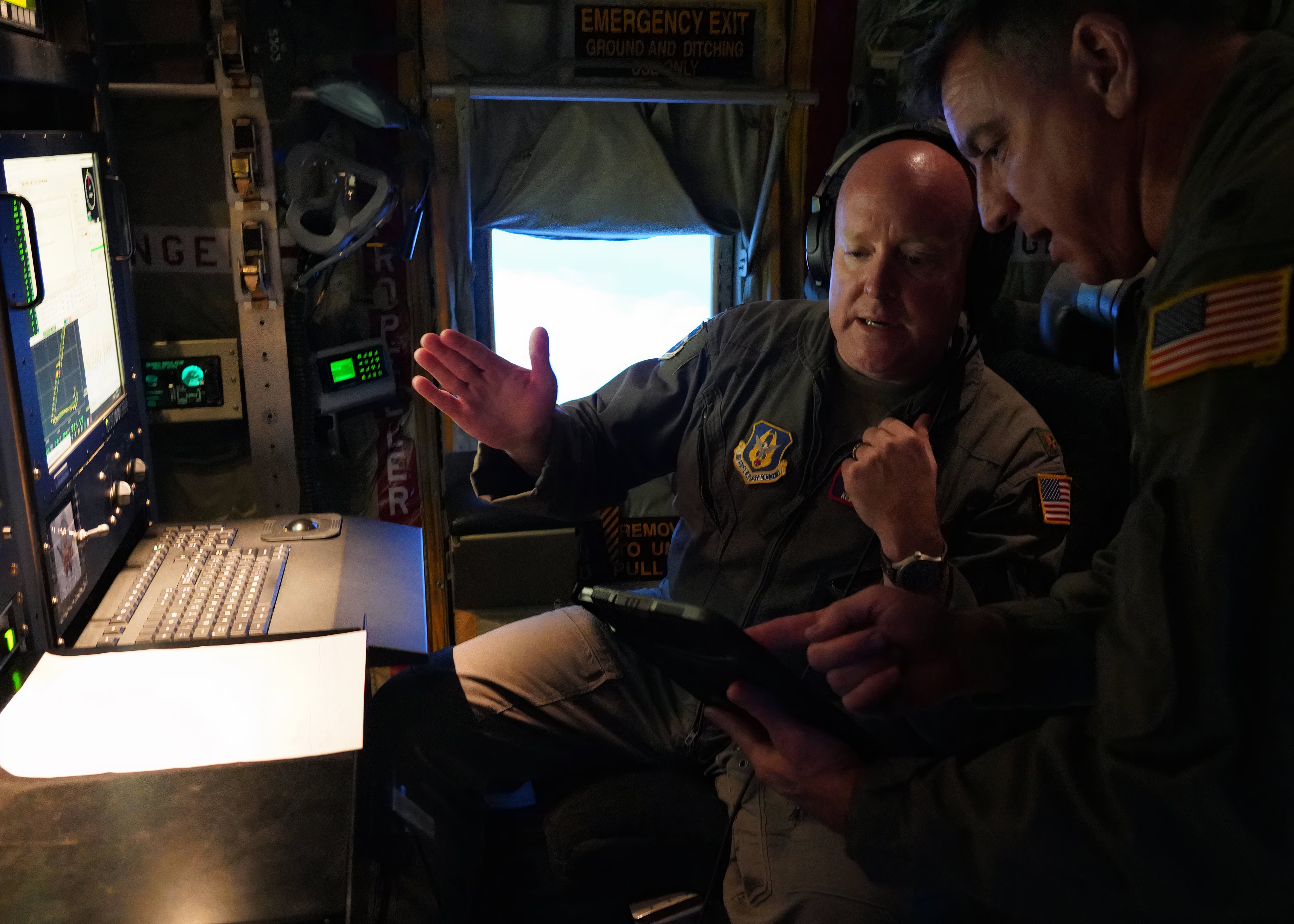
Photo: USAF
Despite satellite imagery’s ability to detect and track hurricanes, aircraft still need to be deployed into the storms to record barometric pressure and wind speed. Today, the 53rd Weather Reconnaissance Squadron is responsible for an area that stretches midway from the Atlantic Ocean to the Hawaiian Islands. In this specific area, there have also been occasions when the 53rd was tasked with monitoring Pacific typhoons and collecting data on winter storms.
The USAF sent its Boeing KC-135 Stratotankers to Kansas
As Hurricane Helene was bearing down on the west coast of Florida in late September, the USAF relocated its Boeing KC-135 Stratotankers from Tampa to McConnell Air Force Base in Kansas. MacDill Air Force Base is located four miles south-southwest of downtown Tampa, Florida, and is home to the 6th Air Refueling Wing. After flying back from Kansas, the aircraft only remained at MacDill for two days before being evacuated back to Kansas and before the arrival of Hurricane Milton.
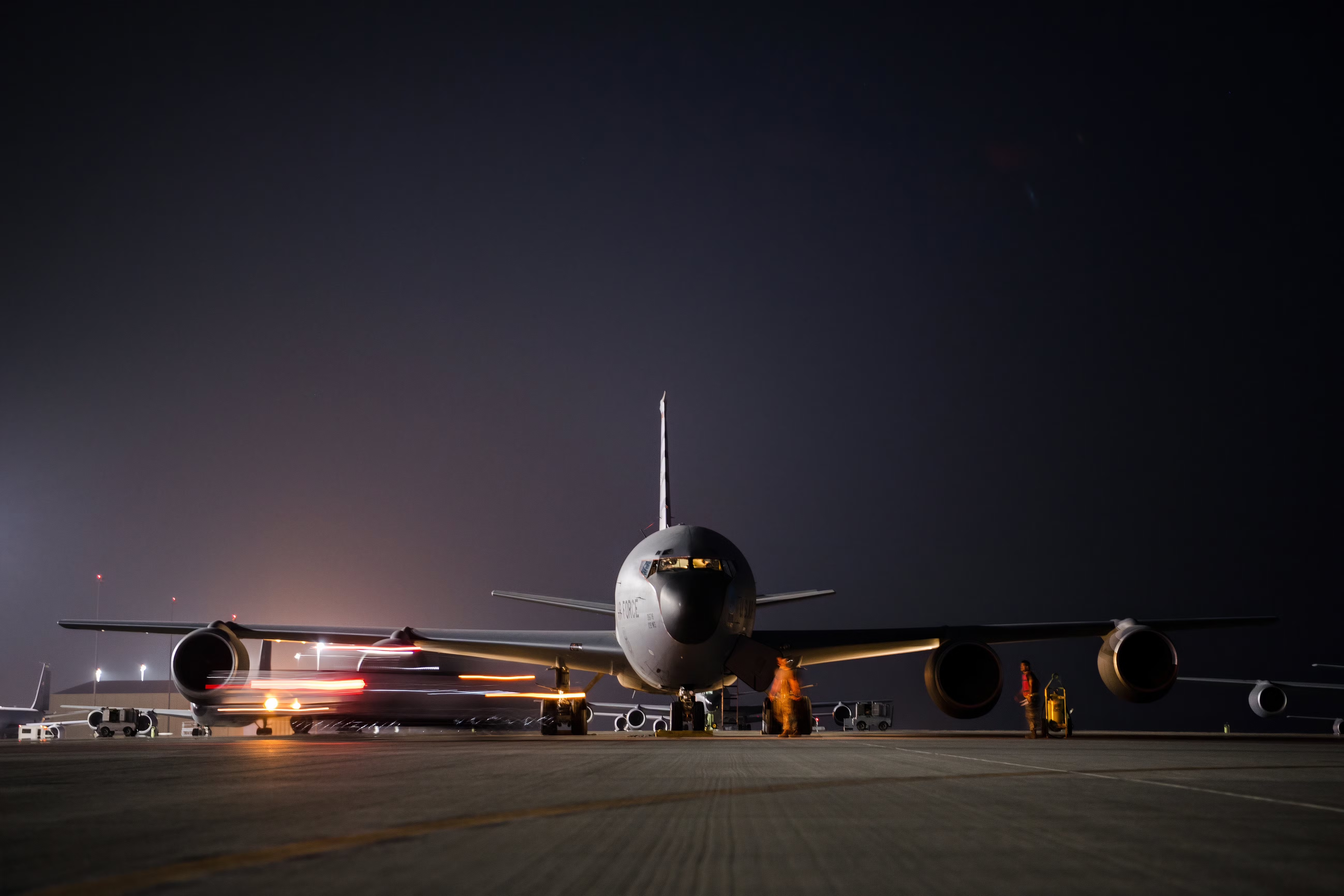
Photo: USAF
Two aircraft that were not deemed airworthy were stored away in hangars before Milton’s arrival as base personnel and their families were evacuated. Fortunately, Milton became a category 3 hurricane before making landfall near Siesta Key, an hour south of Tampa. Unlike Helene, the storm surge was not as bad, and MacDill escaped significant damage but remains closed due to debris on the surrounding roads.
The United States military preparedness and response to hurricanes
The Department of Defense and other uniformed services of the United States military take an all-hands-on-deck approach to hurricane tracking and disaster relief. Hurricane specialists at the National Oceanic and Atmospheric Administration study satellite imagery to track and predict storm paths while keeping emergency managers informed of the latest developments.
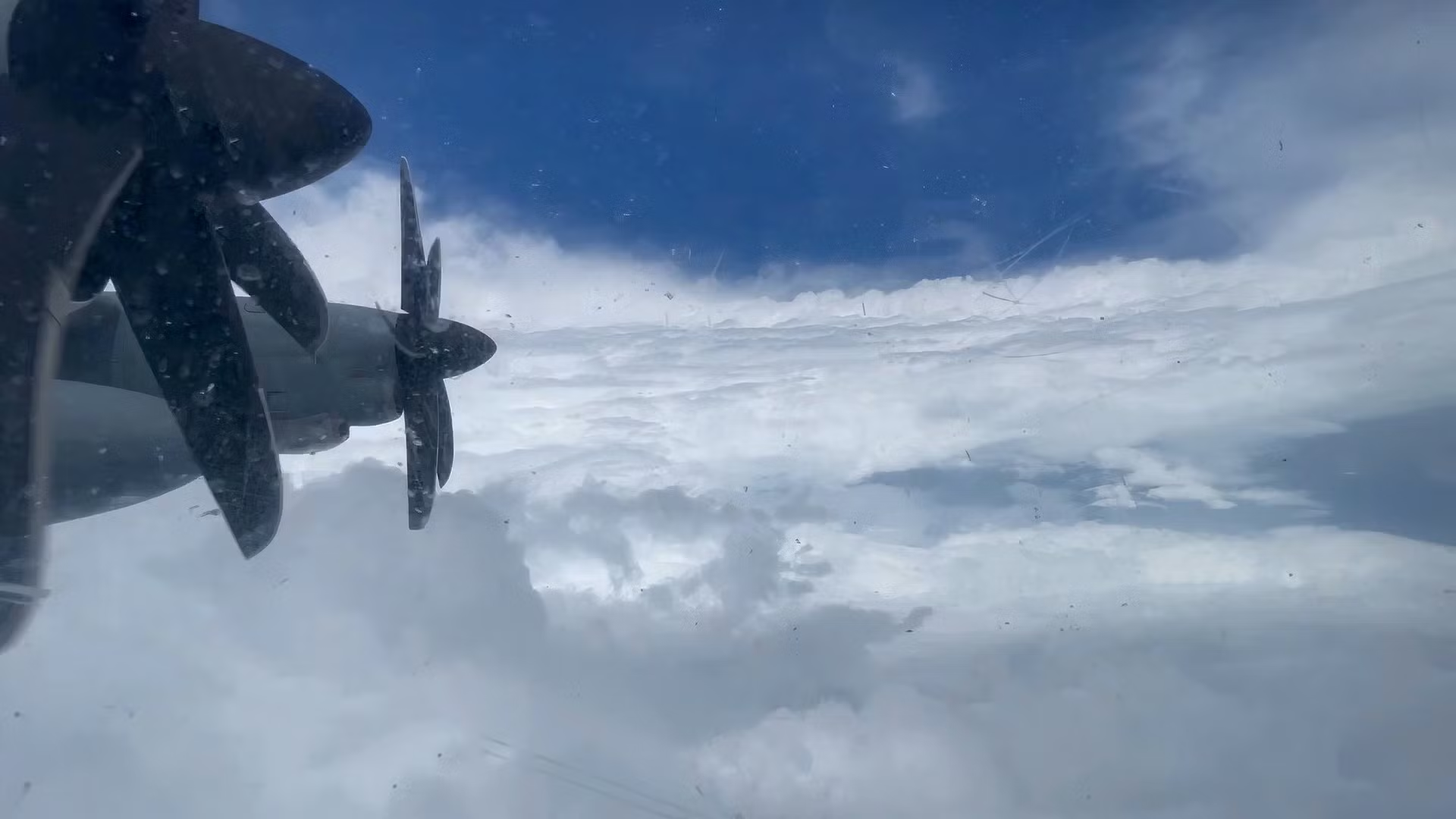
Photo: USAF
If a hurricane looks likely to impact the United States or one of its territories, the National Hurricane Center in Miami, Florida, requests that the Air Force deploy its Hurricane Hunters to fly through the storm and collect data. Once they have a good idea of where the storm will impact, all services of the United States military and reserves are put on alert.
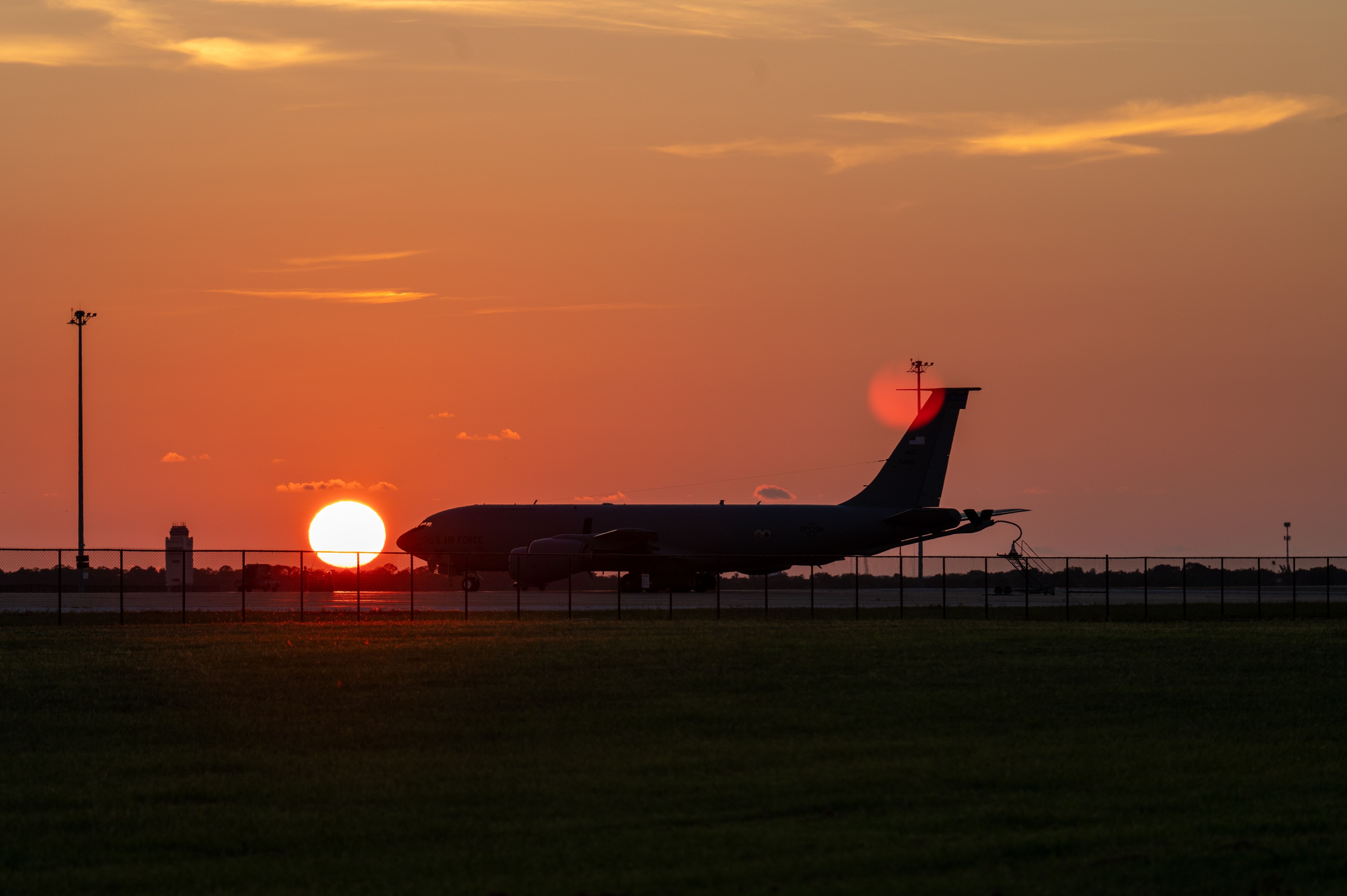 Related Florida’s MacDill Air Force Base Begins Partial Evacuation As New Storm Milton Follows Wake Of Hurricane Helene
Related Florida’s MacDill Air Force Base Begins Partial Evacuation As New Storm Milton Follows Wake Of Hurricane Helene
The base has only just recovered from Helene.
What role does the military play in Hurricanes?
Air National Guard: During a natural disaster, the United States Air National Guard is tasked with airlifting rescue teams, supplies, and food to the affected area.
The Coast Guard: The United States Coast Guard and the United States Navy search for survivors at sea and inland waterways.
Army Corps of Engineers: The Army Corps of Engineers monitors dams and levees for failures and participates in communications and roadway clearing.
Army National Guard. The United States Army National Guard uses helicopters, high-water vehicles, and swift boats to rescue stranded people and distribute aid.
All the above services operate alongside the Federal Emergency Management Agency (FEMA) to help communities recover from natural disasters.
Source link : http://www.bing.com/news/apiclick.aspx?ref=FexRss&aid=&tid=670e5a1627f2401faa88b2d1c93cdbee&url=https%3A%2F%2Fsimpleflying.com%2Fhow-us-air-force-prepares-hurricane%2F&c=3025876774086316732&mkt=en-us
Author :
Publish date : 2024-10-15 00:35:00
Copyright for syndicated content belongs to the linked Source.

